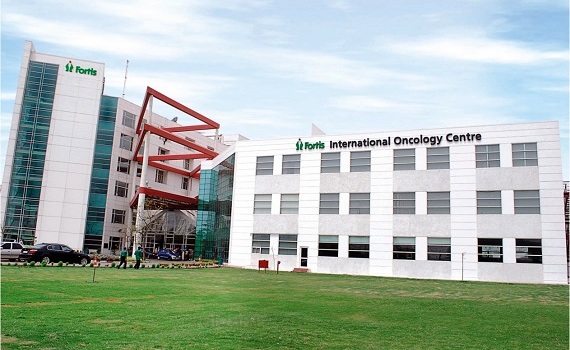Triple Arthrodesis and Internal Fixation Treatment in India
treatment
starting from
Introduction to Triple Arthrodesis and Internal Fixation
In this detailed and informative blog, we will explore the surgical procedure known as "Triple Arthrodesis" and the use of "Internal Fixation" in orthopedic medicine. Triple Arthrodesis is a complex surgical fusion of three joints in the foot, while Internal Fixation involves the utilization of various devices such as screws, plates, or rods to stabilize and align fractured bones. We will delve into the purpose, procedure, recovery, and benefits of these treatments, aiming to engage readers and provide valuable insights into this important topic.
Understanding Triple Arthrodesis
Triple Arthrodesis is a complex surgical procedure performed to treat painful conditions affecting the hindfoot. It involves fusing three joints: the talocalcaneal joint, the subtalar joint, and the talonavicular joint. The goal of this procedure is to provide stability and reduce pain in the affected foot.
Indications for Triple Arthrodesis
Triple Arthrodesis is recommended for individuals suffering from conditions such as severe arthritis, joint deformities, or chronic pain that have not responded to conservative treatments.
Conditions Treated with Triple Arthrodesis
Triple Arthrodesis is commonly used to treat conditions such as:
- End-Stage Ankle Arthritis
- Post-Traumatic Arthritis
- Talocalcaneal Coalition
- Charcot Arthropathy
Preparing for Triple Arthrodesis Surgery
Before undergoing Triple Arthrodesis, patients undergo a thorough preoperative assessment. X-rays, MRI scans, and other imaging tests are used to evaluate the condition of the foot and determine the extent of the surgery required.
Anesthesia Options
Triple Arthrodesis is performed under general anesthesia or regional anesthesia, depending on the patient's overall health and the surgeon's recommendation.
The Triple Arthrodesis Procedure Step-by-Step
The surgical procedure involves several essential steps:
1. Patient Positioning: The patient is positioned on the operating table to allow the surgeon easy access to the foot.
2. Incision and Exposure: The surgeon makes an incision to expose the affected joints and gain a clear view of the surgical area.
3. Joint Preparation: Cartilage is removed from the joint surfaces to prepare them for fusion.
4. Fixation Placement: Internal fixation devices, such as screws or plates, are carefully positioned to stabilize the joint and hold the bones together.
5. Wound Closure: The incision is meticulously closed using sutures or staples to promote proper healing.
Recovery and Rehabilitation After Triple Arthrodesis
Following Triple Arthrodesis, proper postoperative care is crucial for successful recovery.
- Postoperative Care: Patients are typically required to keep their foot elevated and avoid putting weight on it for several weeks.
- Physical Therapy for Foot Rehabilitation: Physical therapy plays a vital role in the rehabilitation process, helping patients regain strength and mobility.
- Expected Recovery Timeline: The recovery period varies from patient to patient, but most individuals can resume regular activities within six to eight weeks.
Benefits and Risks of Triple Arthrodesis
Advantages of Triple Arthrodesis
- Pain Relief: Alleviating Chronic Foot Pain
- Improved Stability: Enhancing Foot Function and Movement
- Enhanced Joint Function: Restoring Proper Joint Alignment
Potential Complications and Risks
- Infection: Addressing the Risk of Post-Surgical Infections
- Nonunion or Delayed Union: Managing Fusion Failure
- Nerve Damage: Understanding and Minimizing Nerve-Related
Complications
Comparing Internal Fixation Techniques in Triple Arthrodesis
Different internal fixation devices can be used in Triple Arthrodesis, each with its own set of advantages and disadvantages.
Types of Internal Fixation Devices
- Screws: Providing Stable Fixation
- Plates: Distributing Pressure and Stress
- Rods: Promoting Fusion and Stability
Pros and Cons of Each Fixation Option
Each type of internal fixation device offers unique benefits and carries certain risks, which should be discussed with the surgeon to make an informed decision.
Alternative Treatments for Foot Conditions
In some cases, non-surgical treatments may be considered before opting for Triple Arthrodesis.
Non-Surgical Options: Exploring Conservative Treatment Alternatives
- Medications: Pain Management and Inflammation Control
- Physical Therapy: Strengthening and Stretching Exercises
- Orthotics: Customized Shoe Inserts for Improved Foot Support
When Surgery May Not Be Necessary
For certain patients or conditions, surgery might not be the best course of action, and alternative treatments may be more suitable.
Life After Triple Arthrodesis: What to Expect
Impact on Mobility and Quality of Life: Triple Arthrodesis can significantly improve mobility and reduce pain in the long term, leading to an enhanced quality of life.
Long-Term Outcomes: Patients can expect better joint function and an improved overall condition after recovering from the procedure.
Patient Success Stories of Triple Arthrodesis
Real-life experiences of patients who have undergone Triple Arthrodesis can provide valuable insights into the benefits and challenges of the procedure, offering encouragement and support to those considering the surgery.
Conclusion
By providing valuable information about Triple Arthrodesis and Internal Fixation, this blog aims to assist individuals seeking insights into these orthopedic treatments. Remember, consulting with a qualified orthopedic surgeon is essential to determine the best course of action for your specific foot condition.
How It Works
Need help in organizing medical travel to India?











